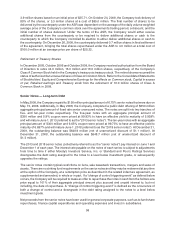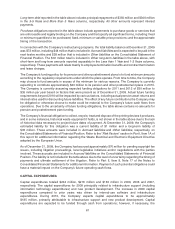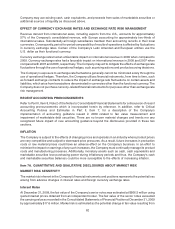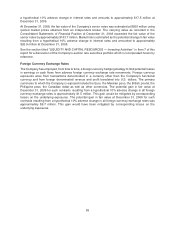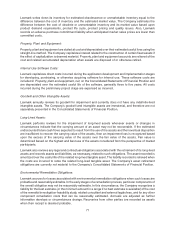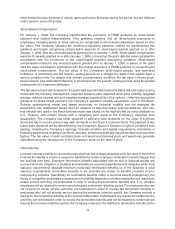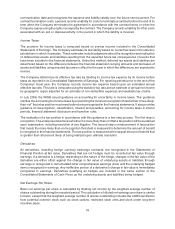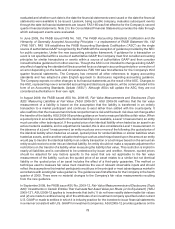Lexmark 2009 Annual Report Download - page 74
Download and view the complete annual report
Please find page 74 of the 2009 Lexmark annual report below. You can navigate through the pages in the report by either clicking on the pages listed below, or by using the keyword search tool below to find specific information within the annual report.Lexmark International, Inc. and Subsidiaries
NOTES TO CONSOLIDATED FINANCIAL STATEMENTS
(Tabular Dollars in Millions, Except Per Share Amounts)
1. ORGANIZATION AND BUSINESS
Since its inception in 1991, Lexmark International, Inc. (“Lexmark” or the “Company”) has become a
leading developer, manufacturer and supplier of distributed printing and imaging solutions. The Company’s
products include laser printers, inkjet printers, multifunction devices, and associated supplies, services
and solutions. Lexmark also sells dot matrix printers for printing single and multi-part forms by business
users. The customers for Lexmark’s products are large enterprises, small and medium businesses and
small offices home offices (“SOHOs”) worldwide. The Company’s products are principally sold through
resellers, retailers and distributors in more than 150 countries in North and South America, Europe, the
Middle East, Africa, Asia, the Pacific Rim and the Caribbean.
2. SIGNIFICANT ACCOUNTING POLICIES
Principles of Consolidation:
The accompanying consolidated financial statements include the accounts of the Company and its
subsidiaries. All significant intercompany accounts and transactions have been eliminated.
Use of Estimates:
The preparation of consolidated financial statements in conformity with accounting principles generally
accepted in the United States of America (“U.S.”) requires management to make estimates and judgments
that affect the reported amounts of assets, liabilities, revenue and expenses, as well as disclosures
regarding contingencies. On an ongoing basis, the Company evaluates its estimates, including those
related to customer programs and incentives, product returns, doubtful accounts, inventories, stock-based
compensation, intangible assets, income taxes, warranty obligations, copyright fees, restructurings,
pension and other postretirement benefits, contingencies and litigation, and fair values that are based
on unobservable inputs significant to the overall measurement. Lexmark bases its estimates on historical
experience, market conditions, and various other assumptions that are believed to be reasonable under
the circumstances, the results of which form the basis for making judgments about the carrying values of
assets and liabilities that are not readily apparent from other sources. Actual results may differ from these
estimates under different assumptions or conditions.
Foreign Currency Translation:
Assets and liabilities of non-U.S. subsidiaries that operate in a local currency environment are translated
into U.S. dollars at period-end exchange rates. Income and expense accounts are translated at average
exchange rates prevailing during the period. Adjustments arising from the translation of assets and
liabilities, changes in stockholders’ equity and results of operations are accumulated as a separate
component of Accumulated other comprehensive earnings (loss) in stockholders’ equity.
Cash Equivalents:
All highly liquid investments with an original maturity of three months or less at the Company’s date of
purchase are considered to be cash equivalents.
Fair Value:
The Company defines fair value as the price that would be received to sell an asset or paid to transfer a
liability in an orderly transaction between market participants at the measurement date. In measuring fair
value, the Company uses a hierarchy of inputs to valuation techniques that maximizes the use of
68


